Categories
Latest Updates
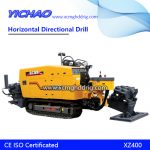
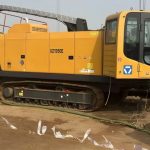
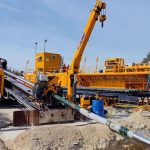
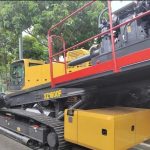
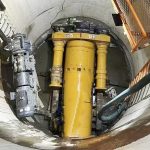
With the continuous advancement of urbanization in China, the age of drainage pipelines is increasing year by year, and the administrative departments have gradually strengthened supervision over the construction of pipeline networks. However, judging from the results of the construction and actual operation of drainage pipelines, after a large number of buried pipelines have been put into operation for several years, due to external forces or their own service life, structural damage will inevitably occur due to poor local geological stripes and other reasons. The phenomenon of functional damage directly causes perforation or leakage accidents. At the same time, the phenomenon of damage to the surrounding drainage pipelines caused by the construction in progress also occurs from time to time. The safety of water supply brings hidden dangers. The traditional treatment method is generally excavation, repair or replacement. The old pipe network is basically located under the main road of the city or on the edge of the structure. The repair or replacement will involve many factors such as road administration, ground obstacle removal and restoration, and public coordination. Moreover, if the partial damage of the pipeline causes the overall operation failure, the overall replacement will cost too much. Therefore, it is imperative to grasp the operation status of the drainage pipeline in time, ensure the safe operation of the urban water supply, and repair the existing defective pipeline in time. The trenchless repair technology for pipelines began to emerge in developed countries in the 1970s, and then gradually formed an industry. The trenchless repair technology has unique technical characteristics. , building safety, and ensuring the smooth flow of traffic has remarkable excellence, and is increasingly attracting extensive attention from various countries. China’s current urban development is gradually moving from the era of construction to the era of maintenance and management, but various complex geographical factors such as urban traffic, underground pipelines, environment and greening protection, expressways, railways and rivers are affecting the maintenance and repair of pipelines. It not only leads to the high cost of construction and maintenance measures of traditional excavation and repair technology, but also has a huge impact on people’s livelihood and social benefits. Therefore, from the perspective of economic and social benefits, the trenchless technology of urban pipe network is of great significance to the service life of technical facilities, saving infrastructure investment, energy saving and emission reduction, and improving the level of urban construction management. Harbin is currently in the stage of speeding up its development, and the water supply pipelines will gradually face maintenance and partial replacement. At present, this forward-looking project has not been put into use in this area, which can be described as a broad market prospect. The relevant pipeline cleaning and repair technology is introduced as follows:
1. Chemical cleaning technology
Chemical cleaning technology is to use chemical agents (generally with inorganic acids such as hydrochloric acid, sulfuric acid, nitric acid, and organic weak acids such as citric acid and sulfamic acid) and certain technological means to clean the pipe network, equipment, etc. process.
2. Physical cleaning technology
Physical cleaning technology is divided into high-pressure water jet cleaning technology and PIG physical cleaning technology
2.1 High-pressure water jet cleaning technology
High-pressure water jet cleaning is to use the water pressurized by the pressurized system of the equipment to form a high-speed water jet from the nozzle. This water jet has high impact and exploitation ability, and can remove the scale, metal oxides and other The attachments are removed, and the cleaning quality is very good. Equipped with gun heads of different specifications and shapes, the pipes of different specifications can be cleaned and descaled, and the rotating gun heads can be specially customized for the cleaning of large-diameter pipes.
2.2 PIG physical cleaning technology
PIG cleaning technology is not a single technology, it includes on-site tracking technology and transmitting and receiving PIG technology. After the PIG pig is put into the launcher, the pressure difference is generated in the forward direction of the PIG by conveying the medium or compressed air to form a forward thrust, so that the PIG pig moves along the pipeline. During the operation, the PIG body or its cleaning The accessories continuously contact and squeeze the scale on the pipe wall in the pipe, and scrape the scale off.
Two issues must be considered before the pipeline is repaired with lining: one is the safety and reliability of the pipeline after the repair of the lining; the other is the applicability of the lining material to the medium. When the overall operation of the pipeline fails due to local defects, but the subject material is still valuable, and its structure itself can be used as a pipeline support, the repair method can be used. The main methods of repair are:
BKP UV-cured pipeline repair material (UV lining) is a resin-impregnated pipe that is transported through a manual working well into the pipeline to be refurbished and hardened there, so that the underground pipeline is repaired, BKP UV-cured pipeline repair The material (UV lining) additionally strengthens the support force of the pipeline system. With this process, it is possible to save the huge excavation work, reduce the cost of renovating the road surface and restore the environment, and the impact on the environment is minimal.
The soft lining method, also known as the in-situ curing method or the in-situ forming and lining repair method, is currently the most popular construction method for trenchless pipeline repair. It is a layer of liquid thermosetting resin lined on the inner wall of the existing old pipe, which is cured by heating (using hot water, hot steam or ultraviolet rays, etc.) to form a thin-layer pipe that is tightly combined with the old pipe.
Spraying is commonly used as pipe lining for anti-corrosion purposes, and is a technique for applying anti-corrosion and structural linings to pipes. The high-speed rotating spray head passes through the pipeline under the traction of the winch, and sprays and deposits the lining material onto the entire inner surface of the pipeline under the action of centrifugal force.
The local repair method is to carry out resin grouting or chemical grouting in the damaged part of the pipeline. Due to external force or joint failure, when a local rupture is formed inside the pipeline, remote grouting (resin) can be considered to seal the local rupture. The repair method can solve the following four main problems:
(1) Make the loose and separated old unreinforced pipes have a bearing capacity similar to that of stone arches;
(2) Provide additional structural properties to help the damaged pipe withstand structural loads;
(3) It has anti-repair function;
(4) It can replace the lost pipe section. Chemical grouting with urea ester or similar materials has been used for many years in drain repair, especially in North America.
The stainless steel sheet lining repair technology is to lining the inside of the pipeline with steel plates. Lining steel plate inside the pipeline can increase the overall compressive resistance of the pipeline, and also has the effect of anti-seepage. Since the stainless steel lining can prevent the corrosion of the inner wall of the pipeline, reduce the roughness of the inner wall of the pipeline, and increase the overflow of water, the lined pipeline is safer, lighter, more economical, and has a longer service life, so as to achieve the purpose of repair.
Trenchless pipeline repair technology is a comprehensive engineering technology involving various knowledge fields and various technical fields. It involves engineering mechanics, fluid mechanics, material mechanics, polymer materials, mechanical design and manufacturing, electronics and other disciplines. The pipeline CCTV imaging detection technology, as a supporting technology for trenchless pipeline repair, brings great convenience to the repair work of trenchless pipelines. Pipeline CCTV (Closed Circuit Television) imaging inspection technology is a special technology for video imaging inspection of the scale condition of the pipeline before cleaning, the cleaning quality after cleaning and the quality of the pipe lining layer after repair. It is composed of automatic crawler, external control system, image recording system, monitor system, signal line, signal line rack and so on. The automatic crawler can automatically move forward and backward in the pipeline. It is equipped with a micro-control processor and a camera component installed in the front with adjustable focus, image enlargement, reduction, fixing, negative image and mirror image as the main lens, which can be used for up and down, Swing left and right and rotate; the lens is installed at the rear, which can be detected synchronously when moving backward. The external control system, image recording system, and monitor system are unified and integrated using a notebook computer, which is small in size, clear in weight, and easy to use; on-site inspection information can be recorded, and the running status of the trolley (including running distance, control information, etc.) can be displayed simultaneously. The development of trenchless repair technology provides many possibilities and guarantees for the operation and maintenance of the pipeline network. Its overall advantage is that the negative impact of the repair is small, the site occupied by the repair is relatively small, and the impact on the ground, traffic, environment, and surrounding underground pipelines is very weak. It can be foreseen that in the near future, with the continuous research and development of new materials and repair technologies, after the repair materials are mass-produced in China, China’s trenchless repair technology will enter a new stage of development, and this technology will definitely be used by water supply and drainage pipes. It is widely recognized by network operators that entering the market early will obtain a wider and wider angle, so it is imperative to promote trenchless repair technology.
